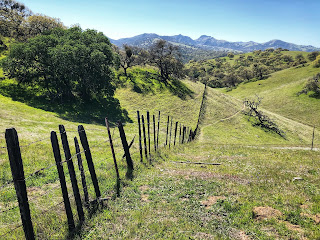Yesterday I attended a (Zoom) poetry reading and discussion with two poets I admire, Ellen Bass and Barbara Ras. Here are two poems by Ellen, one of which (the second one here, written a few months before her dear dog Zeke died) she read to us. (I have featured Barbara before, but I will make a point of doing so again soon.)
Asking Directions in Paris
Où est le Boulevard Saint Michel?
You pronounce the question carefully.
And when the native stops,
shifting her small sack of groceries,
lifting her manicured hand,
you feel a flicker of accomplishment.
But beyond that, all clarity
dissolves, for the woman
in the expensive shoes and suit exactly the soft gray
of clouds above the cathedral, does not say
to the right, to the left, straight ahead,
phrases you memorized from tapes
as you drove around your home town
or mumbled into a pocket Berlitz on the plane,
but relays something wholly unintelligible,
some version of:
On the corner
he is a shop of jewels in a fountain
and the hotel arrives on short feet.
You listen hard, nodding,
as though your pleasant
disposition, your willingness
to go wherever she tells you,
will make her next words pop up
from this ocean of sound, somewhat
the way a dog hears its name
and the coveted syllable
walk.
If you're brave enough, or very nervous,
you may even admit you don't understand.
And though evening's coming on
and her family's waiting, her husband lighting
another Gauloise, the children setting the table,
she repeats it all again, with another
gesture of her lovely hand, from which you glean
no more than you did the first time.
And as you thank her profusely
and set off full of doubt and groundless hope,
you think this must be how it is
with destiny: God explaining
and explaining what you must do,
even willing to hold up dinner for it,
and all you can make out is a few
unconnected phrases, a word or two, a wave
in what you pray is the right direction.
Ode to Zeke
 |
Ellen happened to mention
that this photo, alluded to
in the poem, is on Instagram. |
O breathing drum, O cask of dark
waters, O decaying star, my
barking heart, my breaking brother,
what will seep into the space
your body leaves? O huge
eighteen-muscled ears, oscillating
ossicles and cochlea, your busy canals
now hollow caves of quiet. I have said
your fur is black, but you are
silvered, rimed with frost.
You are the new moon.
You are light in the dark house.
How long will I see your shadow?
O heavy hunk of existence, O great flank
I have rested my head upon
when I was too weak for human touch.
Sleek leading man, you debonair dog,
how people on the avenue stopped to swoon.
O splaying legs once faster than rabbits,
canines slashing flesh. Urgent thug,
unstoppable thrust. O happy snapping
at the wind. What do you remember
now that you are mud slide, glacier
melting, cliff collapsing into the sea?
I have memorized your milky breath,
your ballet leaps and whirly-gigging.
Your princely patience, as the children
dressed you—Soccer Zeke
in jersey and shorts, one paw on the ball.
Snorkel Zeke with mask and fins.
Bar Mitzvah Zeke in a yarmulke
and my father’s silk tallit. O my text
of decrepitude, my usher to death,
companion of ten thousand years,
I’ll fry you a fish. I’ll sit by your bowl.
Eat from my hand. I have nowhere to go.






























































